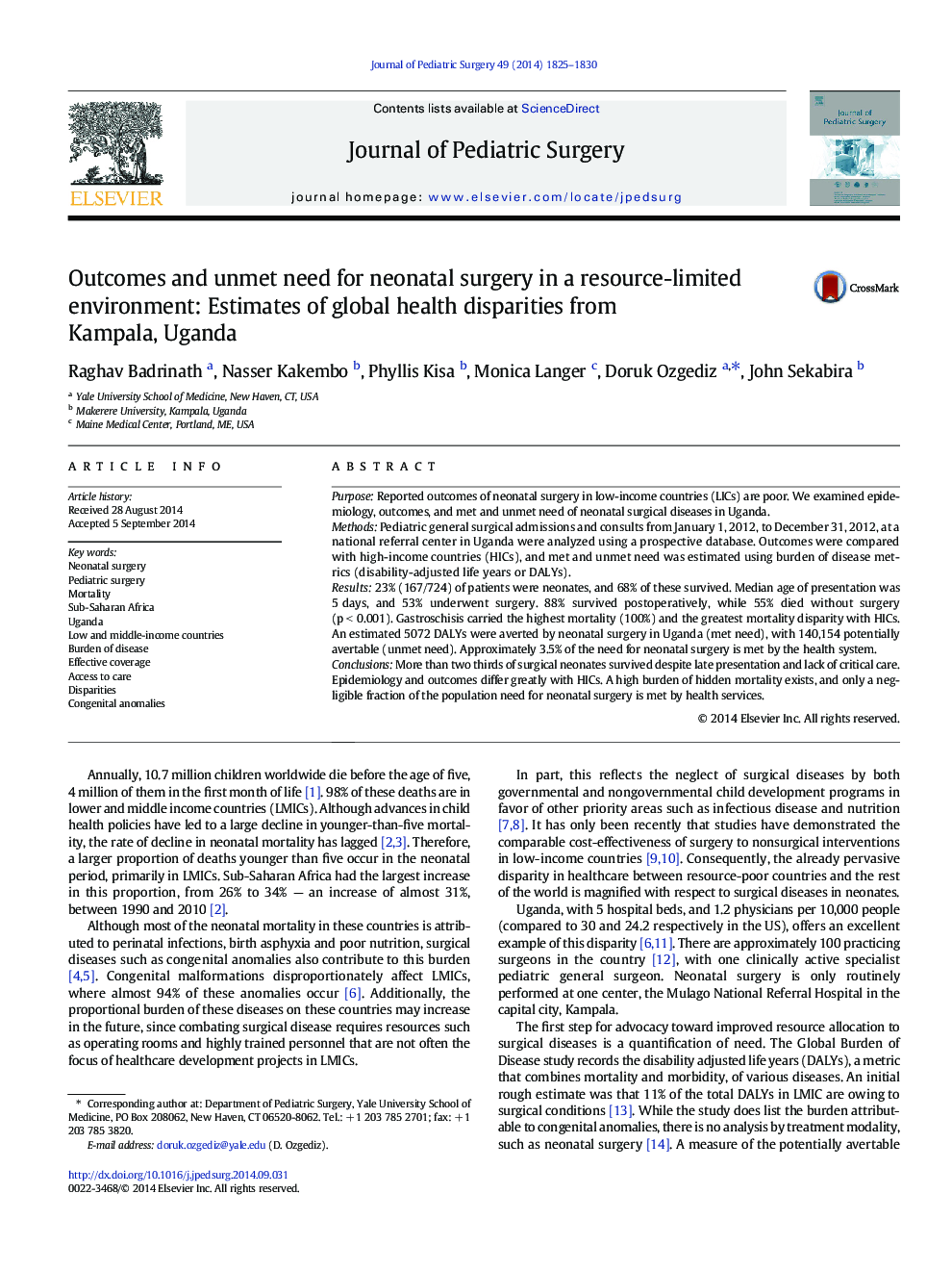| کد مقاله | کد نشریه | سال انتشار | مقاله انگلیسی | نسخه تمام متن |
|---|---|---|---|---|
| 4155600 | 1273751 | 2014 | 6 صفحه PDF | دانلود رایگان |

PurposeReported outcomes of neonatal surgery in low-income countries (LICs) are poor. We examined epidemiology, outcomes, and met and unmet need of neonatal surgical diseases in Uganda.MethodsPediatric general surgical admissions and consults from January 1, 2012, to December 31, 2012, at a national referral center in Uganda were analyzed using a prospective database. Outcomes were compared with high-income countries (HICs), and met and unmet need was estimated using burden of disease metrics (disability-adjusted life years or DALYs).Results23% (167/724) of patients were neonates, and 68% of these survived. Median age of presentation was 5 days, and 53% underwent surgery. 88% survived postoperatively, while 55% died without surgery (p < 0.001). Gastroschisis carried the highest mortality (100%) and the greatest mortality disparity with HICs. An estimated 5072 DALYs were averted by neonatal surgery in Uganda (met need), with 140,154 potentially avertable (unmet need). Approximately 3.5% of the need for neonatal surgery is met by the health system.ConclusionsMore than two thirds of surgical neonates survived despite late presentation and lack of critical care. Epidemiology and outcomes differ greatly with HICs. A high burden of hidden mortality exists, and only a negligible fraction of the population need for neonatal surgery is met by health services.
Journal: Journal of Pediatric Surgery - Volume 49, Issue 12, December 2014, Pages 1825–1830